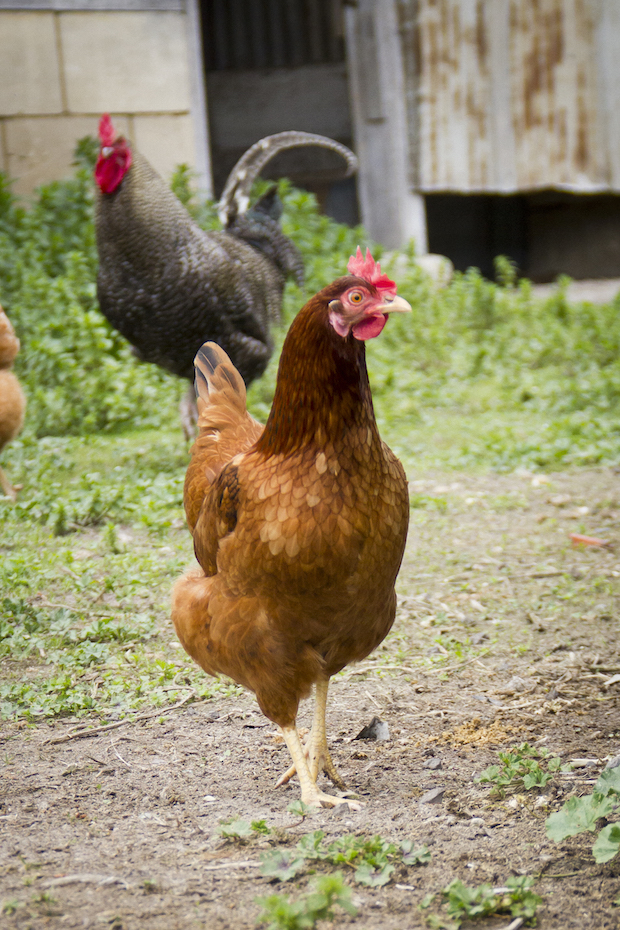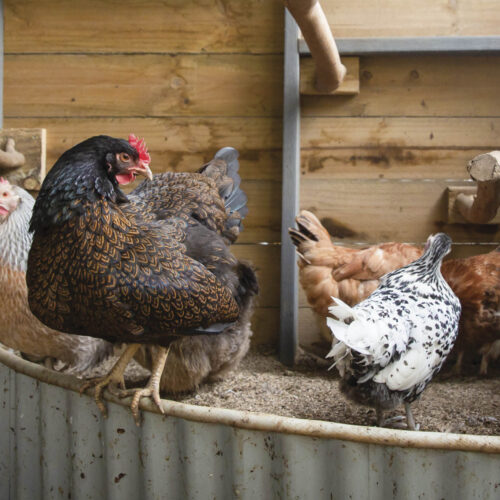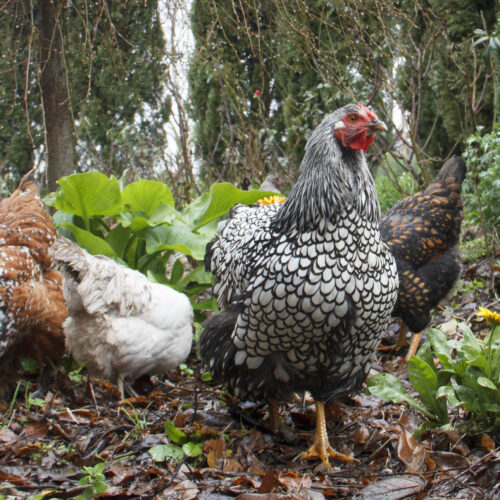Hybrid hens
2018-03-26T01:56:47+11:00
Jessamy Miller explores the pros and cons of keeping hybrid chooks and how they stack up against pure breeds.
Hybrid hens are the most common form of poultry in Australia, and yet people know little about them. These are the standard red layers kept by commercial egg farms. There are three types available, the placid Hyline Brown; the more active Lohmann Brown, bred for free-range operations; and the ISABrown, which falls between the others in temperament. It is almost impossible to tell the breeds apart by appearance, but don’t assume all hybrids are ISAs. The breeds used to develop them are classified, but probably included Rhode Island Reds and Whites.
Short life
Commercially, hybrids come into lay at around 17 weeks, produce an egg daily for 60–80 weeks, then are culled and dispatched. A small number are redirected to rescue organisations. This accelerated performance puts stress on a fowl’s body and they tend to live shorter lives, perhaps only 2–3 years. This means it’s better value to obtain them at point of lay than at 14 months or older, when they are past their peak.
Nutritional needs
Daily laying is akin to being a peak athlete; so it’s no surprise hybrid hens require a high-quality and nutritious ration to maintain health and production. Whereas purebreds can manage on a lower-quality diet with scraps or forage, hybrids suffer. They will drop production, reduce egg quality, or turn to alternative protein sources, such as feather pecking and even cannibalism. To keep hybrids happy and productive, choose a quality proprietary ration with around 16–18 per cent protein and offer only a small amount of scraps.
Eggs get larger as hens age, but the calcium ration stays the same, leading to thinner shells. Hybrids need constant access to free-choice medium-grade shell grit to meet calcium needs and avoid breakages.
Neurotic habits
The selective breeding program has resulted in a few repetitive habits. It is common to see hybrid hens pecking obsessively at non-food items such as wood, gumboots and Styrofoam. They are also prone to window staring, especially if there is a TV inside. Use fencing to keep hybrids away from windows and unsuitable objects for pecking, and encourage them to express natural behaviours with dust bath and foraging areas. Never allow chooks around Styrofoam, which is a petrochemical product and not suitable to be eaten.
Sustainability scorecard
It is surprising to see hybrid hens on organic or permaculture farms. With around 18 million layers in Australia, they are neither rare nor endangered. They are closer to fast food than slow living, bred to lay all their eggs in the shortest space possible, and then be replaced by a fowl with identical genetics.
Purebreds can lay far more eggs over their lifetime. They follow a more extended laying pattern that is natural and seasonal, and live longer, so need to be replaced less often. Purebreds exhibit traits such as foraging, resistance to disease, and broodiness, allowing you to keep an economic self-replacing flock. In addition to this, their long histories, unique feather patterns and varied egg colours are an appealing alternative. It would do much to help preserve purebreds if those espousing natural farming systems embraced a breed of fowl commensurate with their values. For example, a busy forager such as the Araucana is cheap to keep, while top layers like the Australian Langshan and Ancona are beautiful and good natured.
Success
If you buy, rescue or are given hybrid hens, the key to success is meeting their needs – make sure they have a top-quality ration and a stress-free environment. Hybrids score high on egg performance, but low on sustainability, and have more demanding needs than many realise. Their ideal niche is as part of a mixed backyard flock of purebreds to provide a few extra eggs over winter.
Rescue fowls
Many backyarders gain joy and satisfaction from providing a home for rescue birds. Obtained at around 22 months, these chooks may arrive bedraggled, partially feathered and without a clue about natural behaviours. With time and care, they will feather up and can be taught to perch, scratch and dust bath. Those rescued are, sadly, a drop in the ocean. And because they are short lived, this can be a tragic and disappointing process for the soft hearted. A satisfying alternative that can make a real difference is maintaining a rare breed. Here the small numbers of birds kept by backyarders have a meaningful impact on our poultry diversity, providing a concrete reward for time and energy.






